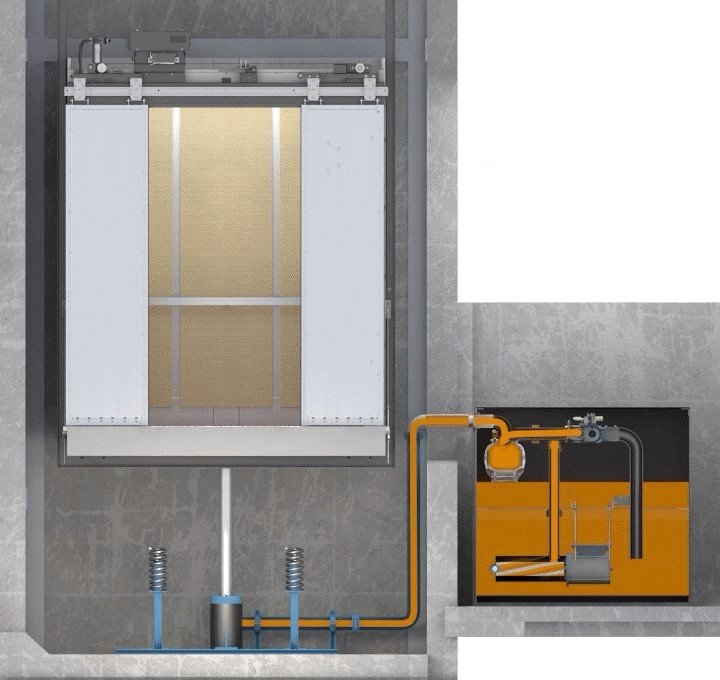How Exactly Does a Hydraulic Elevator Work?
Because of the notoriety of the traction elevator, hydraulic elevators can often be overlooked — even when they could be a much better fit for a building’s vertical transportation needs. The hydraulic elevator was invented only a couple of decades after the traction, and the technology has proven to have some advantages over traction elevators. Energy efficiency and durability are just two of the many benefits that building owners have experienced with their hydraulic elevators.
But how does a hydraulic elevator work? How can you know if it’s right for your building? Let’s take a look at what makes these machines function so smoothly.
How Do Hydraulic Elevators Work?
All hydraulic elevators use a straightforward concept that has become widely popular in the construction industry. A hydraulic elevator works by pressurizing hydraulic fluid with an electronic pump and forcing it into a cylinder. The pressure created pushes a piston that moves the elevator upwards. To lower the elevator, this functions in reverse with pressure decreasing, lowering the elevator cab.
The jack module is a crucial component for this elevator as it holds the piston, cylinder and jack head. All of these are necessary for the successful operation of a hydraulic elevator.
Since its debut, hydraulic technology has advanced to create two distinct jack applications. The first application is the conventional in-ground jack which is exactly what it sounds like. It has a singular cylinder which is placed into a hole drilled in the ground. To accommodate the cylinder, which is used to support the elevator cab as it raises and lowers, this hole must be as many feet deep as the elevator travels upward. In the event that a building or property owner does not want to drill into the ground for the jack, they will often consider the alternative: the twinpost jack.
The twinpost jack refers to a completely above-ground, two-jack system with jacks on either side of the elevator cab that help it to travel approximately 33 ½ ft. This application is a common solution when drilling a deep hole is not possible. Often, it can be less than desirable to drill a hole due to local laws, so it’s important that you are up to date with your local ASME A17.1 elevator safety code.

Where Do Hydraulic Elevators Work Best?
Because they require a piston to push them up from underneath, hydraulic elevators are limited in the height they can reach within a building. This makes hydraulic elevators ideal for low-rise applications.
Hydraulic elevators offer a fast and safe installation and can have space-saving designs with machine room-less applications. On average, they can also have lower lifecycle costs when compared to a traction with the same height capacity. Hydraulics have been the standard for quality and reliability in low-rise buildings for years by giving tenants the effortless ride that they want while saving energy for the building. Any building type from residential to commercial can benefit from a hydraulic elevator.
Is a Hydraulic Elevator Right for My Building?
As we’ve learned, numerous factors play into choosing the right elevator for your building. Local elevator safety code may dictate which type of elevator you’ll need, but other elements such as environment, building height, floor height and more will need to be determined before the right elevator type for your use case. Each of these can affect the decision in application type.
Want to learn more? Read on for more information about our reliable endura hydraulic elevator, read more about the differences between hydraulic and traction elevators, or contact your local TK Elevator branch representative.
 United States
United States

